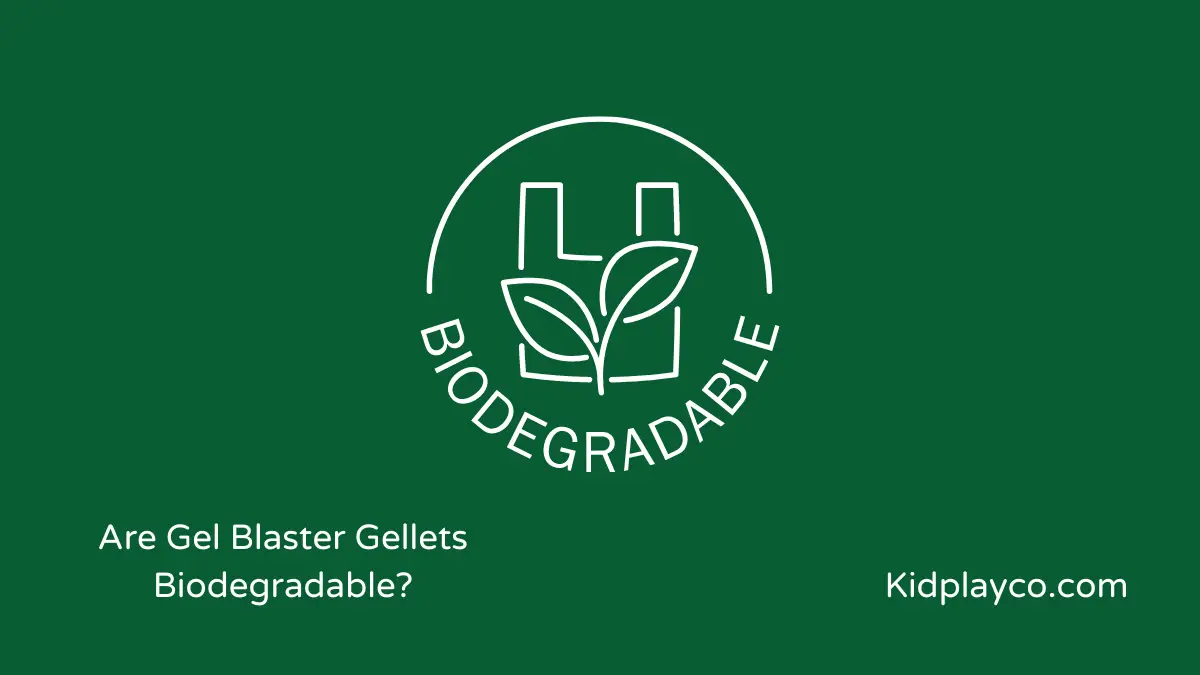Are Gel Blaster Gellets Biodegradable?

Kidplayco is an affiliate website. If you purchase a product using our links we might be compensated. See Disclosure.
Today we will find an answer on the question: Are Gel Blaster Gellets Biodegradable?
So, the other day, I was out in the backyard with my buddies, and we were having a blast with our gel blasters. We were running around, dodging and weaving, and just having a grand old time. But then, one of my friends asked me a question that really got me thinking.
He said, “Hey, do you think these gel blasters gellets are biodegradable?”
Now, I don’t know about you, but I’m not exactly an expert on environmental science. But I was curious, so I did a little digging. And let me tell you, the answer surprised me. It turns out that gel blasters gellets are biodegradable – as per Hasbro as well as Gel Blaster’s official website.
Also See: Top Gel Blaster Guns to Buy
Are Gel Blaster Gellets Biodegradable?
Yes, gel blaster gellets are biodegradable. Gellets are made from Super Absorbent Polymer (SAP), which is a type of polymer that can break down naturally over time. The exact rate of biodegradation will depend on various factors such as temperature, humidity, and soil conditions.
However, it is generally accepted that gel blaster gellets will biodegrade within a few weeks to a few months, depending on the conditions. It is important to note that while gellets are biodegradable, they should still be disposed of responsibly and not left in the environment.
Safe and Eco-Friendly Ways to Dispose of Gellet Balls
Gel Blaster Gellet balls, also known as water beads, are small, colorful, and squishy balls that are used as ammunition in gel blasters. While they are fun to play with, it is important to dispose of them properly to avoid any harm to the environment or wildlife.
Here are some tips on how to safely dispose of Gel Blaster balls:
1. Do Not Flush them Down the Toilet
Gel Blaster Gellet balls are made of a superabsorbent polymer – a substance that expands when it comes into contact with water.
Flushing them down the toilet can cause blockages in pipes and sewage systems, leading to costly repairs. Moreover, the expanded Gellet balls can harm marine life and pollute waterways. Therefore, it is important to dispose of them properly.
2. Dispose of them in a Sealed Bag
The best way to dispose of Gellet balls is to place them in a sealed bag and throw them in the trash. This will prevent them from expanding and causing any harm to the environment or wildlife. You can use a plastic bag or a biodegradable bag made from plant-based materials.
3. Consider Composting
If you have a compost bin, you can dispose of Gellet balls by placing them in the bin. Since these balls are made from biodegradable materials they can break down in compost, but it may take several months for them to decompose completely.
However, the composting process requires the right balance of carbon and nitrogen, so make sure to mix the Gellet balls with other organic materials such as food scraps, leaves, and grass clippings.
4. Donate or Recycle
Some Gel Blaster Gellet balls are made from biodegradable materials and can be recycled. Check with your local recycling center to see if they accept Gellet balls for recycling.
Alternatively, you can donate them to schools or community centers for use in art projects or sensory play. This not only helps with the biodegradability of the Gellet balls but also reduces waste and promotes sustainability.
You May Also Like: Do You Need to Dry Gel Balls Before Use
Do Gel Blasters Gellets Decompose on Their Own?
Gel blaster gellets do not decompose in the same way that organic matter or biodegradable materials do. These gellets are typically made of plastic and other synthetic materials that do not break down naturally over time.
However, like any Super Absorbent Polymer (SAP) product, gel balls can degrade or break down over a long period of time due to exposure to UV radiation, heat, and other environmental factors.
How Long does it take for Gel Blaster Orbeez to Biodegrade?
Gel blaster Orbeez typically biodegrade within a few weeks to a few months, depending on environmental conditions such as temperature, humidity, and microbial activity.
However, it’s important to note that biodegradability can vary between different brands and formulations of gel blaster Orbeez, so it’s always best to follow the manufacturer’s instructions for disposal.
Conclusion
Well, after delving deep into the world of gel blasters, I can confidently say that gel blasters gellets are biodegradable without a doubt.
However, it does depend on the type of gel balls used as well as the environment they are in.
As someone who cares deeply about the environment and sustainability, I urge all gel blaster enthusiasts to prioritize the use of biodegradable gel balls and to dispose of them properly. It’s our responsibility to minimize our impact on the planet and protect it for future generations.
Together, we can enjoy the fun and excitement of gel blasters while also taking care of the environment.
